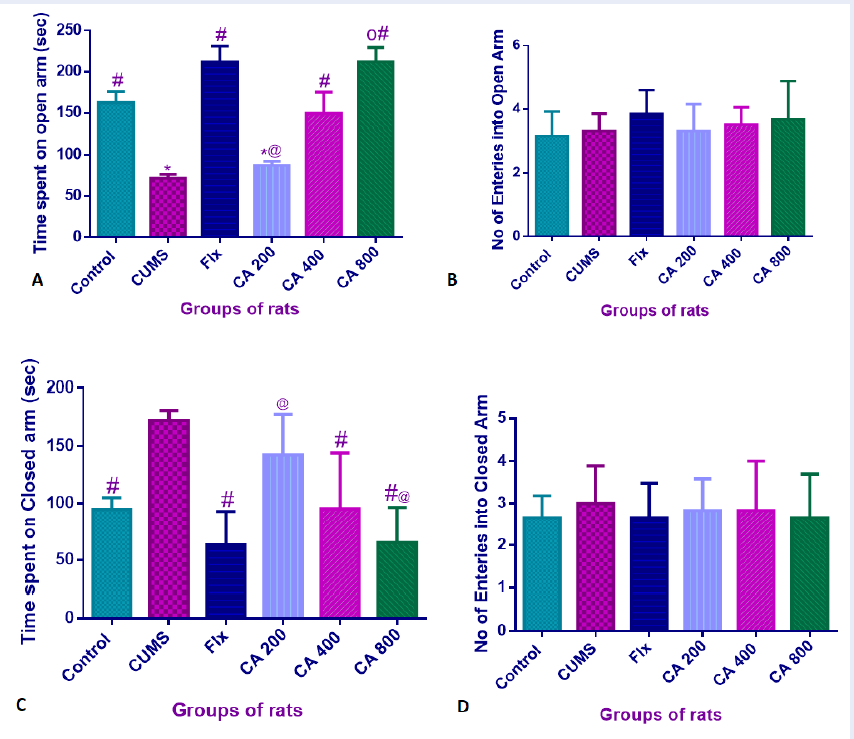Centella asiatica prevents chronic unpredictable mild stress-induced behavioral changes in rats
DOI:
https://doi.org/10.15419/bmrat.v6i6.550Keywords:
Centella asiatica, anxiety, depression, chronic stress, fluoxetine, cognitive deficits, behavioural tests, forced swimming test, cortisolAbstract
Background: Depression is a psychological disorder which is associated with mood swings and cognitive deficits, and is ranked third among the leading causes of global health care burden. Chronic unpredictable mild stress (CUMS) has been shown to induce depression-like behaviors in rodents, which exhibit similarities to the human form of depression. Centella asiatica (CA) is an ancient medicinal plant which has neuroprotective potential. This work aimed to assess the protective role of CA on CUMS-induced rats.
Methods: Thirty six rats randomly divided into six groups were used for the evaluation. The groups were as follows: 1, Unstressed + normal saline (control); 2, CUMS + normal saline (model); 3, CUMS + fluoxetine (10 mg/kg) standard antidepressant; 4-6, CUMS + CA (200, 400 & 800 mg/kg). Nine different stressors (S) (S1: 24-h food deprivation, S2: 24- h water deprivation, S3: 5-min cold swimming (at 5◦C), S4: 12-h change of cage mate, S5: 1-min tail pinch (1 cm from the tip of the tail), S6: 12-h cage tilt (at 45◦), S7: 12-h overcrowding of cage, S8: 12-h wet bedding with 200 mL of water, and S9: 4-h physical restraint) were administered to the stressed groups with at least 2 stressors per day. The treatments lasted for 8 weeks, and the rats were evaluated through open field test (OFT) and elevated plus maze (EPM) for anxiety-like behavior, forced swimming test (FST) for depression-like behaviour, and T-maze spontaneous alternation for learning and memory. Furthermore, serum cortisol levels were also evaluated.
Results: CUMS-induced rats showed anxiety-like behaviors in OFT and EPM tests, depression-like behavior in FST and cognitive deficits in T-maze test, as well as increased serum cortisol levels. Conversely, administration of CA (at 400 and 800 mg/kg doses) and fluoxetine (at 10 mg/kg dose) prevented the aberrant behavioral changes and also the changes in the serum cortisol levels. No significant differences of behaviors were observed between the groups of rats administered with CA (400 and 800 mg/kg) and those administered with fluoxetine (10 mg/kg), suggesting that the therapeutic potential of CA is comparable to that of fluoxetine.
Conclusion: The data obtained showed that CA, at doses of 400 and 800 mg/kg, effectively reversed the anxiety and depression-like behaviors, amnesic behaviors, as well as serum cortisol levels in a CUMS-induced rat model of depression. This suggests that CA is a potential candidate for the development of future anti-depressants.

Downloads
Published
Issue
Section
License
Copyright The Author(s) 2017. This article is published with open access by BioMedPress. This article is distributed under the terms of the Creative Commons Attribution License (CC-BY 4.0) which permits any use, distribution, and reproduction in any medium, provided the original author(s) and the source are credited.
